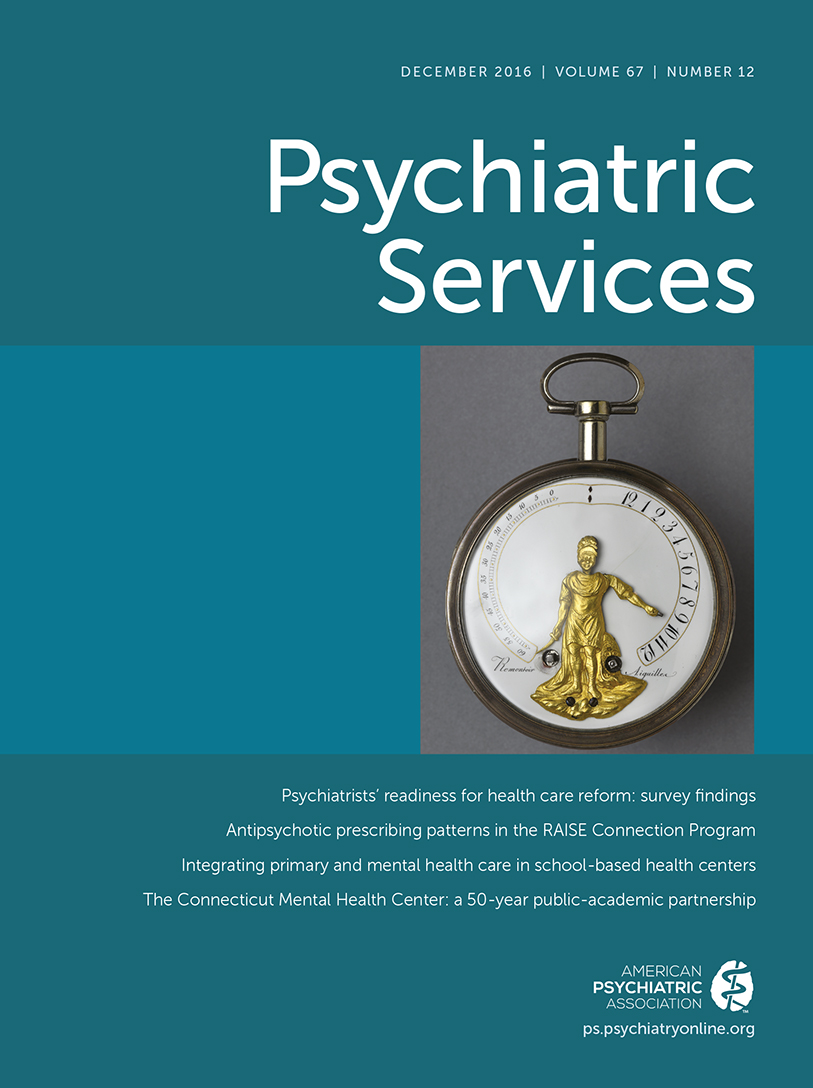The RAISE Connection Program: Psychopharmacological Treatment of People With a First Episode of Schizophrenia
Abstract
Objective:
This study examined the adherence of psychiatrists to the Schedule of Recommended First and Second Line Antipsychotic Medications (“Antipsychotic Schedule”), which was implemented in two Recovery After an Initial Schizophrenia Episode (RAISE) Connection Program Implementation and Evaluation Study clinics.
Methods:
Sixty-five individuals with a first episode of psychosis were enrolled in the RAISE Connection Program clinics. Two psychiatrists received training and ongoing consultation on use of a shared decision-making approach to prescribing antipsychotic medications according to the Antipsychotic Schedule. Information about participants, prescribed antipsychotic medications, and completion of side-effect assessments were obtained from standardized research assessments and chart extractions. Descriptive statistics were used to characterize the extent to which patterns of antipsychotic prescribing and side-effect monitoring were consistent with the Antipsychotic Schedule.
Results:
Ninety-two percent of participants were prescribed an antipsychotic medication and received the medication on 76%±35% of the days they were in treatment. Seventy-seven percent of participants were prescribed at least one Antipsychotic Schedule first-line antipsychotic, 20% were prescribed olanzapine, and 10% received a trial of clozapine. Regarding monitoring for metabolic side effects, 92% of participants had at least one weight recorded, 72% had at least one blood glucose measure recorded, and 62% had at least one lipid profile recorded.
Conclusions:
In the context of a study in which training and ongoing clinical supervision by experts was provided to psychiatrists and shared decision making was encouraged, antipsychotic prescribing patterns closely adhered to recommendations established by the RAISE Connection Program.



